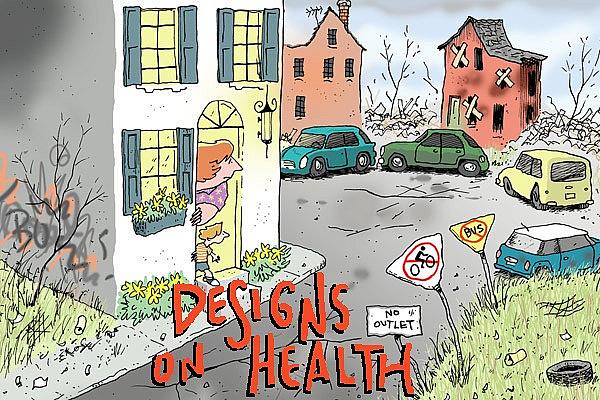Penn researcher explains some basics of 'built environment' research
Carolyn Cannuscio, an urban-health disparities researcher at the University of Pennsylvania, talked to Taunya English about place and the power of design on health.
This story is part of the "Designs on Health" series, produced by 2012 Dennis A. Hunt Fund for Health Journalism fellow Taunya English, a senior reporter for the WHYY/Newsworks Health and Science Desk. The series looks at how neighborhood influences a person's health and the power of place. Other stories in the series include:
Experts urge assessing health impacts before proceeding with new projects
Stealth health: 'lower-calorie freight train' changes show up on menus

As part of the WHYY/NewsWorks.org series "Designs on Health," senior health writer Taunya English spoke with Carolyn Cannuscio, an urban-health disparities researcher at the University of Pennsylvania. Listen to the radio interview to hear Cannuscio's story about her personal connection to the field.
Interview extras not included in the radio story.
On the built environment:
"It includes things like streets and sidewalks, the design of buildings, the designs of parks, places to play, public spaces, a whole host of decisions about how we want to use our land, so zoning decisions, public investment decisions. It's really bricks and mortar as well as the green that we introduce into our environment."
On skepticism from other experts:
"One of my colleagues walked in, and sat down at the table and said: 'There's never been a design solution in history that has improved health.' My first statement back to him was: 'Come on, what about sewers?' Things that we really take for granted on a daily basis now ... that sewage will be kept separate from our drinking water supply. I think that was highly designed."
On funding to investigate links between place and health:
"It's certainly not funded to the degree that other types of research, basic science research, are funded, right now. And part of that is because our system of health funding is built around disease areas. So we have a National Heart, Lung and Blood Institute, but we don't have ... a national urban institute focused on the health of cities. There are real implications for people who want to do this kind of research, which is not cheap to do."
On place health beyond cities:
"In suburbs, in particular, in car-dependent places, we can think about impacts on an everyday basis for children that can't walk or bike to school, for adults who have long commutes into the city and therefore have lost opportunities for time with their families for physical activity, for leisure, or investment in the community. So there's absolutely concern that the design of our suburbs can lead to alienation and disconnection from neighbors. So the suburbs are not exempt."
On redefining what's essential for health:
"I think it's important in neighborhood research to think about neighborhood necessities and neighborhood amenities. One of the neighborhood necessities for health and for a thriving life is to be safe ... We have things that we might think of amenities. We might think of parks and playgrounds as amenities, things that are nice to have that are enjoyable, pleasurable ... I've been involved in some research recently in Philadelphia that is very intriguing, that challenges some of our ideas about what's a necessity and what's an amenity."
On Twitter, follow @TaunyaEnglish and #placehealth to join the conversation about the power of place and the ways neighborhood shapes health.
The "Designs on Health" series was conceived as a project for the Dennis A. Hunt Fund for Health Journalism, which is administered by The California Endowment Health Journalism Fellowships, a program of USC's Annenberg School for Communication & Journalism.
Photo Credit: NewsWorks

